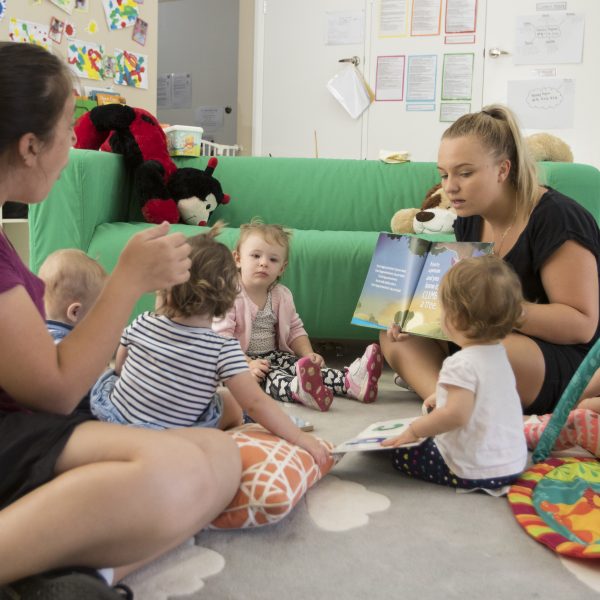Theory vs reality in early childhood education and care

In a recently published book that translates high-quality, peer-reviewed research into everyday practice for early childhood educators, ACER Senior Research Fellow Dr Dan Cloney explores the issues that currently prevent all children from getting the best start in life.
There is a long history of studies that have presented powerful evidence of the effectiveness of high-quality early childhood education and care (ECEC) programs. Importantly, these studies have shown that effective ECEC programs can reduce achievement gaps, including those between children from disadvantaged backgrounds and their more advantaged peers.
There is, however, a gap between what these model programs, designed and implemented by educational and developmental experts under non-market conditions, deliver and what everyday ECEC programs deliver. This gap is related to access and exposure (did children access ECEC programs, and for how many hours), and quality.
Exposure
When thinking about ECEC programs, it is important to consider the age of children when they first come to ECEC programs and the amount of time children are in attendance.
Children are more likely to use ECEC programs as they get older, and as they get older, they use them for longer hours. The Effective Early Educational Experiences (E4Kids) longitudinal study, conducted with around 2500 Australian children between 2010 and 2015, revealed that 34 per cent of children attended ECEC programs for more than 30 hours per week in the year before school. Children from more advantaged families typically attended for more hours. Conversely, children with developmental delays or a disability were likely to attend for fewer hours.
The E4Kids study found there were already visible differences between children aged 3 to 4 years in the levels of their learning. As children grew over the three years of direct observation by the researchers, the individual differences between children grew. Children who were initially low achieving, were even further behind than their peers three years later.
Such evidence of learning gaps emerging earlier than age 4 have led to rapid policy change, including new proposals by state governments to implement two years of universally available preschool, starting at age 3. This could potentially double children’s exposure to ECEC programs.
Access
There are many factors in children’s lives that influence the likelihood that they go to any one program, as well as factors that influence their learning and development. It is important to recognise that these factors are often related. For instance, the same factors that influence a family’s choice of ECEC program also influence learning and development.
Families are constrained by the set of ECEC programs provided in their local area. Certain ECEC programs may not exist in some areas, or there may be other barriers such as capacity constraints. Families are also constrained by socio-economic factors, as well as other factors including the needs of other children in the household, which in turn influences the home learning environment.
One key finding of the E4Kids study was that quality programs are not found in all neighbourhoods in Australia. In fact, the likelihood of finding a high-quality setting is related to the relative advantage of the neighbourhood. This was because there were more programs and greater capacity in the most advantaged neighbourhoods, and they tended to be higher quality.
The organisation of the ECEC sector presents substantial equity barriers for children from the most vulnerable backgrounds. These children are least likely to access the highest quality programs and because of this they gain the least from the sector. This means that we are unlikely to deliver outcomes that narrow achievement gaps that emerge early and persist (or grow wider) across the life course, and are attributable to relative disadvantage, rather than the underlying potential or aptitude of children.
Quality
There are pathways that can lead to improvement in the effectiveness of the sector, and they relate to improving the quality of all programs, and putting a particular focus on resourcing programs in the most disadvantaged areas.
Interactions are the aspect of ECEC practice and quality that are continually found to be correlated with learning and development gains, while structural aspects (e.g. adult-child ratios, staff qualifications) are considered necessary preconditions for the provision of high-quality interactions.
The level of instructional support present in ECEC programs has been identified as the aspect of quality most likely to impact cognitive development. The E4Kids study found more than half of Australian ECEC programs were considered low quality in this area, with fewer than one per cent of children attending programs rated as having high quality instructional support. This is similar to findings in the US and in the UK. Australian ECEC programs were rated relatively higher on other aspects of quality, showing that instructional support is the key area where there is significant scope for improvement.
Translating research into practice is a way to ensure that what professionals do to engage in continual quality improvement, and what they do to support learning and development, is most likely to be successful. This could involve using better techniques to target areas of quality improvement. For example, if educators and services have evidence-informed understandings about where they are succeeding and where they require improvement, then they can work on aspects of their current practice to help set achievable and explicit targets.
At the policy level, there is clear need to support all ECEC settings to engage in quality improvement. In addition, ECEC settings in the most vulnerable areas need to be resourced to provide high-quality programs. Such high-quality programs are more likely to lead to the reduction of learning and development gaps that are related to structural inequality and disadvantage.
Find out more:
Register for ACER’s free webinar on the topic ‘Getting all children off to the best start in life: The Big Five Challenges in Education in a Changed World’, featuring ACER Senior Research Fellow Dr Dan Cloney, The Australian Literacy & Numeracy Foundation Co-Founder and Executive Director Mary-Ruth Mendel, and Goodstart Early Learning General Manager Social Impact Myra Geddes, taking place on Wednesday 5 May from 4-5pm AEST. Register now.
This article is based on Dr Dan Cloney’s chapter in the book, Strong Foundations: Evidence informing practice in early childhood education and care, by Anna Kilderry and Bridie Raban (ACER Press, 2020). Buy it now.
Popular

Practice
Provider
Quality
Research
Workforce
New activity booklet supports everyday conversations to keep children safe
2025-07-10 09:00:16
by Fiona Alston

Quality
Practice
Provider
Workforce
Reclaiming Joy: Why connection, curiosity and care still matter in early childhood education
2025-07-09 10:00:07
by Fiona Alston

Policy
Practice
Provider
Quality
Research
Workforce
Beyond the headlines: celebrating educators and the power of positive relationships in early learning
2025-07-07 10:00:24
by Fiona Alston













